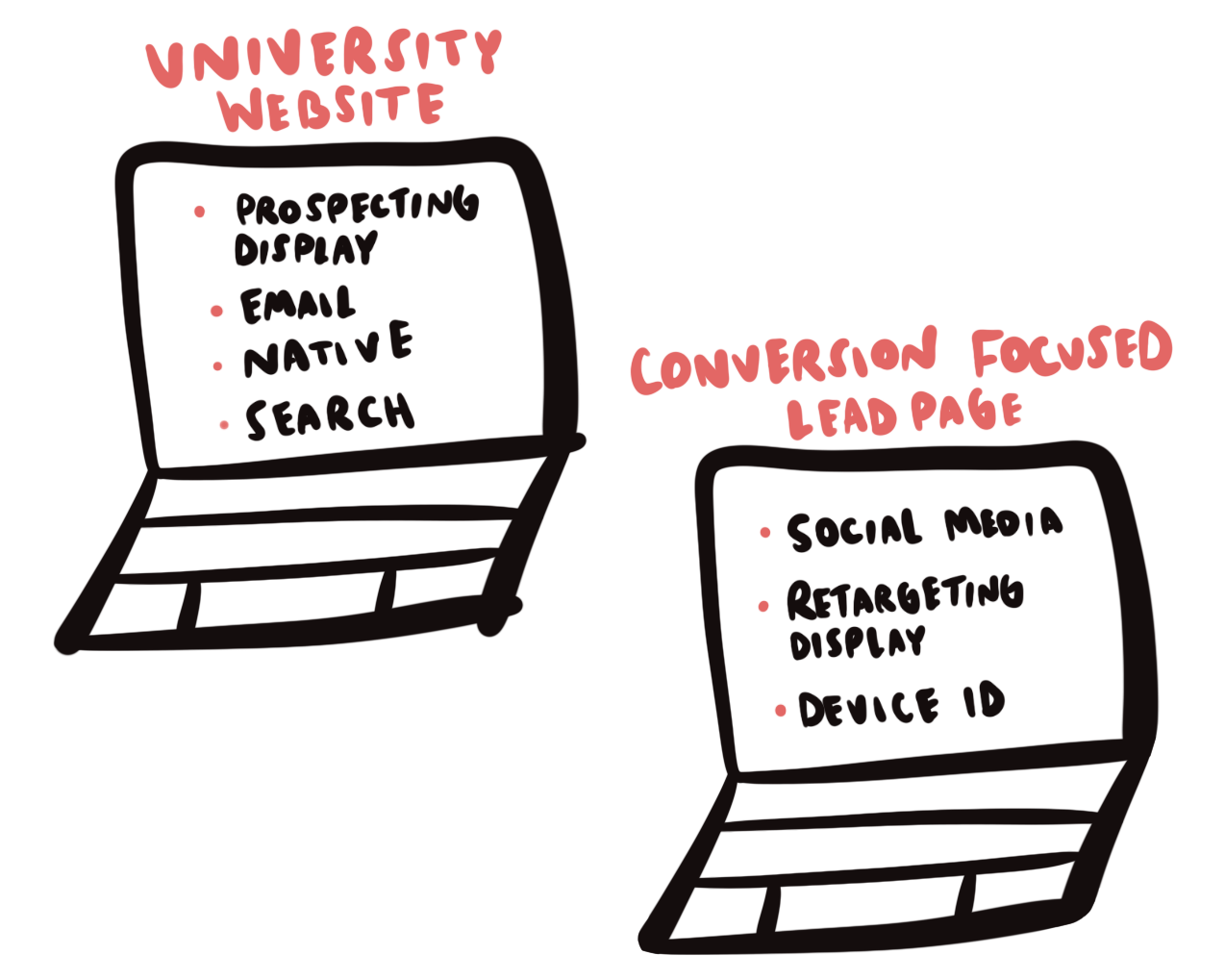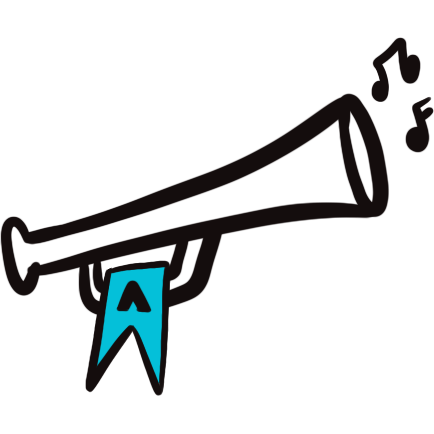
“You can lead a horse to water, but you can’t make it drink.”

An age-old proverb that we constantly face in digital marketing—especially in the world of education.
You know the story. You’ve done the research. You have your target student populations and their decision-makers nailed down. You’ve designed the perfect creative. The channels are all in place. And with excitement, you tell your marketing team to hit launch!
But the conversions don’t come. And if they do, it’s more of a drip than the full faucet you were expecting. You soon realize the problem isn’t with the campaign at all. You realize you’re sending users to a website that does not provide a clear path to conversion. Or, you’re sending users to a landing page that is for conversions but doesn’t give nearly enough information about your programs for students and their families. Bounce rates are high, conversions are low, and you’re left wondering what the best way to go forward is—and the campaign is already in full swing. Good grief!
Fortunately, here at Techint Labs, we ran a recent test on this very matter. If you are an education provider, the results may just help you sleep a little better at night.
In this article, you will learn:
- How we designed a test to see if it was more beneficial to send prospective students directly to a university’s website or a custom landing page
- How we executed that test
- Our conclusions and what they mean for you
The dilemma
We find the dilemma of where to direct users is common among schools, community colleges, and universities. No doubt, there are pros and cons to each. However, we love data, and, although our Creative Director Erin can find a place for gray in her color spectrum, we hate gray areas when it comes to campaign decisions. So, we designed a test for one of our university partners.
The goal:
Determine which landing page direction would bring in the lowest cost per conversion to generate an inquiry form fill.
The test design
We set up an A/B test, also known as split testing, a tactic that allows you to find out which version of a variable—like a headline, image, or in this case, a landing page—works best for your target audience while controlling all other variables.
We sent half of our campaign traffic directly to the university’s website and the other half to an independent landing page. The landing page was designed to maximize conversions by prominently featuring a lead generation form fill at the top and including only a concise amount of information about the university and its programs.
We ran the landing page test across each dominant channel in our campaign, including:
- Prospecting Display
- Retargeting Display
- Device ID display
- Native Content
- Social Media (i.e. Facebook and Instagram)
- Paid Search
The goal:
Determine which landing page direction would bring in the lowest cost per conversion to generate an inquiry form fill.
The execution
The test required a mix of hands-on programming and a few helpful tools from our partners.
On the Paid Search side of the campaign, we ran the test through Google Ad’s Drafts & Experiments Tool. This proprietary tool allows you to easily run these types of A/B tests within your existing campaigns and ad groups.
On the paid social and display side, our operations team manually programmed a split in the university’s campaigns with half the traffic going to the existing site and half the traffic going to the landing page. It’s worth noting that Facebook does have an Experiments tool of its own you can leverage for A/B testing.
We ran the test over two months—enough time to ensure our results would be statistically significant.
The results
Like many scientific tests, the results came back with more than one clear answer for our path forward. We found that different solutions required different final landing pages based on how far along a student or their stakeholder was in the prospective student journey.

University website
We found the university website performed best with our higher-funnel solutions, like prospecting display, native content, and email. Conversion rates for higher-funnel tracking, like page views, research, and inquiry forms, were 5% higher when sending users directly to the university website. While 5% is a marginal difference, we found it best to send users to a place they could digest content and view the programs they were most interested in, as conversion numbers were most dominated by page views for these higher-funnel, assisted conversion platforms.

Independent landing page
With solutions that allowed for more creative and impactful targeting of prospective students further along in their journey, like social media, retargeting, and Device ID targeting, we found conversion rates to be 3x higher when sending users to the conversion-oriented, independent landing page.

Outcome
Overall, we found that as users move further down the conversion cycle in their initial interest, it is more advantageous to send them to an independent, conversion-oriented landing page.
Paid Search was the only anomaly in this conclusion. We saw a 2.6% higher click-through rate (CTR) and over 4x as many conversions by sending users directly to the university website due to sending users to the most relevant content-rich page based on their search terms. And by having higher CTRs, we had higher quality scores, which brought down the cost per click of the campaign and increase its generated web traffic and leads.
Conclusion

Although this test ended, the process is never really done. Since this test, we’ve continued to optimize the landing pages to be more focused on our lead generating solutions, with each change leading to incremental improvement over time. And without tooting the client’s or our horns too much but, *pulls out trumpet*, the work has paid off! During our partnership in the past year, the university saw a significant improvement in the quality of prospective student inquiries. Their year over year admittance rate increased by 10% and deposit rate increased by 18%.
If you are making marketing decisions for a school out there or want to learn more about some of the in-depth strategies we use in the higher education space—we would love to hear from you.
You can always subscribe to our Friendsletter, too, to stay up-to-date on some of the coolest things we’re seeing in digital marketing, thoughts of our own, and the best dog pictures we can get our hands on.